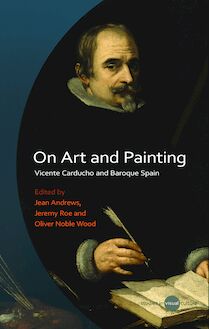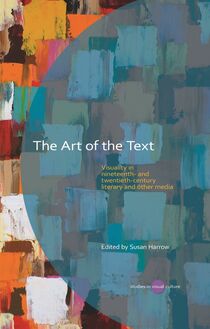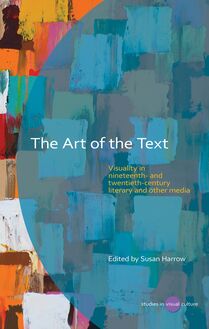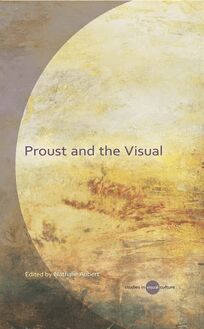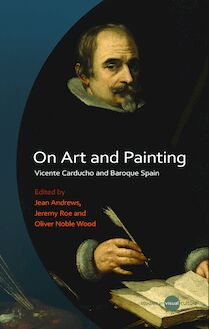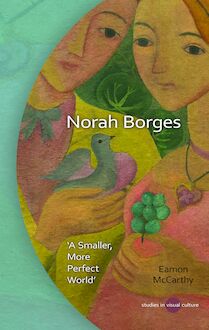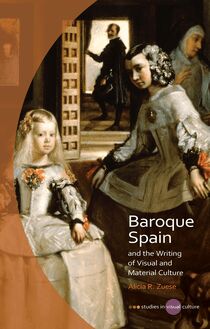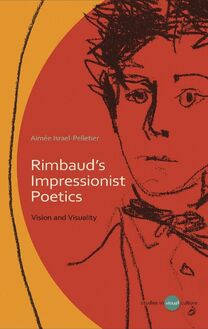The Art of the Text , livre ebook
124
pages
English
Ebooks
2013
Vous pourrez modifier la taille du texte de cet ouvrage
Obtenez un accès à la bibliothèque pour le consulter en ligne En savoir plus
Découvre YouScribe et accède à tout notre catalogue !
Découvre YouScribe et accède à tout notre catalogue !
124
pages
English
Ebooks
2013
Vous pourrez modifier la taille du texte de cet ouvrage
Obtenez un accès à la bibliothèque pour le consulter en ligne En savoir plus
Publié par
Date de parution
15 septembre 2013
Nombre de lectures
2
EAN13
9781783165797
Langue
English
The Art of the Text contributes to the fast-developing dialogue between textual studies and visual culture studies. It focuses on the processes through which writers think and readers respond visually and, in essays by researchers in literature, screen and visual studies, the volume explores the visuality of the literary and non-literary text, with a sustained focus on French material of the later nineteenth and twentieth centuries. Visuality is appraised here not as a state, but as a set of processes of adaptation, resistance, negotiation, and transformation. By reading visually, the contributors here reactivate the visual-textual relations of canonical texts - from Romanticism to Naturalism, Surrealism to high Modernism; from film to fan literature, television to picture language.
Publié par
Date de parution
15 septembre 2013
EAN13
9781783165797
Langue
English
THE ART OF THE TEXT
S tudies IN V isual C ulture
SERIES EDITORS
Margaret Topping
Queen’s University, Belfast
Rachael Langford
Cardiff University
Giuliana Pieri
Royal Holloway, University of London
EDITORIAL BOARD
Mieke Bal
University of Amsterdam
Paul Cooke
University of Leeds
Anne Freadman
The University of Melbourne
Andrea Noble
University of Durham
María Pilar Rodríguez
Universidad de Deusto
Eric thau
University of Hawai’i at Manoa
S tudies IN V isual C ulture
THE ART OF THE TEXT: Visuality in Nineteenth- and Twentieth-Century Literary and Other Media
edited by
Susan Harrow
© The Contributors, 2013
All rights reserved. No part of this book may be reproduced in any material form (including photocopying or storing it in any medium by electronic means and whether or not transiently or incidentally to some other use of this publication) without the written permission of the copyright owner. Applications for the copyright owner’s written permission to reproduce any part of this publication should be addressed to the University of Wales Press, 10 Columbus Walk, Brigantine Place, Cardiff CF10 4UP.
www.uwp.co.uk
British Library CIP Data
A catalogue record for this book is available from the British Library
ISBN 978-0-7083-2659-6
e-ISBN 978-1-78316-579-7
The rights of the Contributors to be identified as authors of this work have been asserted in accordance with sections 77 and 79 of the Copyright, Designs and Patents Act 1988.
Cover image: Shutterstock / Sergey Kamshylin
Contents
Series editors’ preface
Acknowledgements
List of illustrations
Contributors
Introduction
Susan Harrow
I Thinking the visual image
1 Jules Verne: The Unbearable Brightness of Seeing
Timothy Unwin
2 Affinities of Photography and Syntax in Proust’s À la recherché du temps perdu
Áine Larkin
3 Portraits and Neologisms: Understanding the Visual in Henri Michaux’s ‘Voyage en Grande Garabagne’
Nina Parish
4 The ‘trou noir’: Visualizations of Nihilism in Nietzsche and Modiano
Jenny Devine
II Intermedial migrations in the 1920s
5 Painting and Cinema in Aragon’s Anicet
Katherine Shingler
6 Isotypes and Elephants: Picture-Language as Visual Writing in the Work and Correspondence of Otto Neurath
Michelle Henning
7 Colette: An Eye for Textiles
Anne Freadman
8 Stars as Sculpture in the 1920s Fan-Magazine Interview
Michael Williams
III Visual negotiations and adaptations
9 Victor Hugo and Painting: The Exceptional Case of the Orientales
Karen Quandt
10 Visions and Re-visions: Zola, Cardinal and L’Œuvre
Kate Griffiths
11 Donner à voir : Poetic Language and Visual Representation according to Paul Éluard
Peter Hawkins
12 ‘La lettre au cinéma n’est pas une excellente solution’: A Heteromedial Analysis of Chantal Akerman’s Proust Adaptation
Jørgen Bruhn
Translation sources
Bibliography
Series editors’ preface
Studies in Visual Culture provides a forum for ground-breaking enquiry into visual-cultural production in its social, historical and cultural contexts. The series places particular emphasis on the exchanges, transactions and displacements that link Europe to wider global contexts across the visual-cultural field. The series seeks to promote critical engagement with visual media as ideological and cultural as well as aesthetic constructs, and foregrounds the relationship of visual cultures to other fields and discourses, including cultural history, literary production and criticism, philosophy, gender and sexuality research, journalism and media studies, migration and mobility studies, social sciences, and politics. The Studies in Visual Culture series thus focuses on exploring synergies and key debates between disciplines, concepts and theoretical approaches, and offers an exciting new arena for testing and extending disciplinary, theoretical and conceptual boundaries.
Acknowledgements
Many people, not least the twelve contributing authors, have worked with insight, energy, and commitment on the project that has become The Art of the Text . I am deeply grateful to Jean Duffy for her precious support and encouragement. I thank all the team at the University of Wales Press, especially Sarah Lewis.
Illustrations
Figure 6.1 Simple example of an Isotype chart. From Otto Neurath, International Picture Language: The First Rules of Isotype , Psyche Miniatures (London: Kegan Paul, 1936)
Figure 6.2 Illustrations demonstrating how Isotype symbols combine to produce specific meanings. From Otto Neurath, International Picture Language: The First Rules of Isotype , Psyche Miniatures (London: Kegan Paul, 1936)
Figure 6.3 Example of Neurath’s signature. The cat represents Marie Neurath. From a carbon-copy of a letter to Helen Coppen, Otto and Marie Neurath Isotype Collection, Department of Typography & Graphic Communication, University of Reading, Isotype 1/10–11
Figure 6.4 Letter from Otto Neurath to Lancelot Hogben, Otto and Marie Neurath Isotype Collection, Department of Typography & Graphic Communication, University of Reading, Isotype 1/35-37
Figure 9.1 Louis Boulanger, Le Supplice de Mazeppa , Salon of 1827, Rouen, Musée des Beaux-Arts. RMN-Grand Palais/Agence Bulloz
Contributors
Jørgen Bruhn is Assistant Professor at Linnaeus University, Sweden. He has written monographs on Marcel Proust (with Bo Degn Rasmussen) and on M. M. Bakhtin. In addition, he has published articles on the theory of the novel and intermediality as well as on medieval literature and culture, Cervantes and Cassirer. His study entitled ‘Heteromediality’ appeared in Lars Elleström (ed.), Media Borders, Intermediality and Multimodality (Palgrave MacMillan, 2010) and he has also recently produced a book-length study entitled Lovely Violence: The Critical Romances of Chrétien de Troyes (Cambridge Scholars Publishing, 2010). With Anne Gjelsvik and Henriette Thune he has published ‘Parallel Worlds to Possible Meanings in ‘“Let the Right One In”’ in Word & Image (2011). Jørgen Bruhn is currently writing on intermedial theory and adaptation.
Jenny Devine completed her doctoral studies at Royal Holloway, University of London. She is a former pupil of the Ecole Normale Supérieure, Paris, where she received the Certificat d’étudiante étrangère . Her academic specialisms are modern and contemporary French literature and visual arts, as well as Nietzschean philosophy. She has been involved in a variety of contemporary art projects in London, and has worked at the South London Gallery and at Elastic Residence, where she was Writer in Residence.
Anne Freadman is A. R. Chisholm Professor of French at the University of Melbourne, Australia. She has published widely in semiotics, including a book on Charles Peirce, The Machinery of Talk (Stanford University Press, 2004). She has also written on genre theory and on French women’s writing. Anne Freadman is the author of several articles on Colette’s journalism. Her study on Colette’s memory books appeared in 2012 with Legenda.
Kate Griffiths is a Lecturer in French at Cardiff University. She is the author of an AHRC supported monograph, Emile Zola and the Artistry of Adaptation (Legenda, 2009), and of articles on nineteenth-century French literature, adaptation across different media and French film. With David Evans, she is co-editor of two volumes: Pleasure and Pain in Nineteenth-Century France (Rodopi, 2008) and Haunting Presences: Ghosts in French Literature and Culture (University of Wales Press, 2009). She is a member of the executive committees of the Society for French Studies and the Society of Dix-Neuviémistes. Her current projects include monographs on cross-media representations of nineteenth-century France and on Zola and television.
Susan Harrow is Ashley Watkins Professor of French at the University of Bristol. Her research interests lie in modern poetry and narrative with a particular focus on the interrelation of literary modernism and visual culture. She is the author of The Material, the Real and the Fractured Self (Toronto University Press, 2004), of Zola, The Body Modern: Pressures and Prospects of Representation (Legenda, 2010) and of a short study of Zola’s L’Assommoir (1998). She co-edited with Tim Unwin, Joie de vivre in French Literature and Culture (Rodopi, 2009), and with Andrew Watts, Mapping Memory in Nineteenth-Century French Literature and Culture (Rodopi, 2012). She served as joint editor of Romance Studies (1999–2008). She has served as president of the Society of Dix-Neuviémistes (2008–10) and as president of the Society for French Studies (2010–12).
Peter Hawkins is, since 2008, Senior Research Fellow in French in the School of Modern Languages at the University of Bristol. During his long academic career he taught degree-level courses on surrealist poetry and introduced the poetry and aesthetics of Paul Éluard to first-year undergraduates. His other research interests concern popular French chanson and postcolonial literatures in French, with particular reference to the Francophone Indian Ocean area. He was awarded the French academic distinction of Chevalier dans l’ordre des palmes académiques in 1998 and was promoted to the grade of Officier in 2009 .
Michelle Henning is Associate Professor in Visual Culture at the University of the West of England, Bristol. She is the author of Museums, Media and Cultural Theory (Open University Press, 2006) and of numerous articles and chapters on photography, media, museums and modernity. Her essay in this volume is part of a project funded by the Arts and Humanities Research Council (UK) on symbolism and modernism, which focused on Otto Neurath’s ‘picture language’ of Isotype and its connections to Romanticism and to older symbolic systems, such as Egyptian hieroglyphs. She is currently working on a book on Otto Neurath and Isotype.
Áine Larkin is Lecturer in French at the University of Aberdeen, having begun her academic career at Trinity College Dublin where
